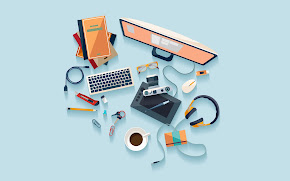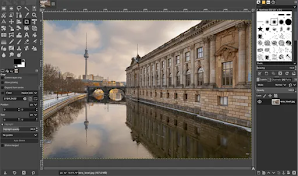Beginner-Friendly Graphic Design Software: The Ultimate Guide for New Creatives
The Best Graphic Design Software For Beginners
The best software tools for graphic design for beginners, as well as complex ones, will be examined in this article. Not all novice designers know where to start, and the world of graphic design can be daunting and complex. Whether it is creating social media graphics, marketing materials, or illustrations, it’s crucial to have the right tools. Tools set the foundation upon which a novice can sharpen their skills to achieve the professional level one day. We will explain how each tool helps in advancement.
Tools For Beginners in Graphic Design Software
It is ideal for beginners in graphic design to start with basic, easy-to-use tools that will enable them to comprehend the foundational skills without much difficulty. With such tools ease of use, interfaces, and pre-made templates are effortless to work with.
1. Caneva – Best for Quick and Easy Designs
Why it’s great for beginners:
Drag-and-drop interface with thousands of templates.
No need for advanced design skills.
Free version available with plenty of features.
Unlock a vast collection of high-quality stock photos, icons, and fonts.
Adobe Express (Previously Adobe Spark) - Great For Beginners Using The Adobe Suite
Why it’s great for beginners:
User-friendly interface that is simple to use.
Includes customizable templates and easy editing features.
Offers a free plan that is supported.
Functions with other Adobe products.
GIMP – The Best Free Alternative to Photoshop
Why it’s great for beginners:
Open-source software that is free to use.
Has tools similar to Photoshop but easier to learn.
Can be customized with additional plugins and brushes.
Supports Windows, macOS, and Linux.
4. Vectra – Best Free Vector Design Tool
Why it’s great for beginners:
Completely free and easy to use.
Focuses on vector graphics, which are essential for branding and logos.
Simple interface with essential design tools.
Cloud-based, so you can access your work from anywhere.
Professional Graphic Design Software for Beginners Looking to Level Up
Once you get comfortable with beginner-friendly tools, you might want to transition to professional software. These tools offer more advanced features but can still be learned step by step.
5. Adobe Photoshop – Best for Photo Editing and Digital Art
Why it’s great for beginners moving to pro-level:
Industry-standard for photo editing and digital art.
Tons of tutorials available online.
Layer-based editing for better control over designs.
- Advanced tools for photo retouching, typography, and effects.
6. Adobe Illustrator – Best for Logo and Vector Design
Why it’s great for beginners moving to pro-level:
Precision tools for creating sharp, high-quality graphics.
Used by professionals for branding and illustration.
Allows you to create infinitely scalable designs without losing quality.
Integrates well with Photoshop and other Adobe tools.
Illustrator is essential if you want to create logos, icons, and professional vector graphics.
7. CorelDRAW – Best Alternative to Illustrator
Why it’s great for beginners moving to pro-level:
Easier to learn than Illustrator.
Packed with professional features for vector design.
Great for both beginners and experienced designers.
One-time purchase option (unlike Adobe’s subscription model).
8. Affinity Designer – Best Budget-Friendly Professional Tool
Reasons for beginners moving to pro-level:
One-time payment (no subscription fees).
Combines features of Photoshop and Illustrator in one tool.
Professional-grade software at an affordable price.
Easier learning curve compared to Adobe software.
9. Procreate – Best for Digital Painting on iPad
Why it’s great for beginners moving to pro-level:Intuitive interface designed for touch and stylus input.
Offers professional-level brushes and tools.
Affordable one-time purchase.
Popular among digital artists and illustrators.
How to Choose the Right Software as a Beginner
To find the best graphic design software for your needs, consider:
Your Goals: If you want to edit photos, Photoshop or GIMP are ideal. If you want to create logos, Illustrator, CorelDRAW, or Affinity Designer are better choices.
Ease of Use: Canva and Adobe Express are great if you need quick, simple designs.
Budget: If you’re on a tight budget, GIMP, Vectr, or Affinity Designer are cost-effective choices.
Long-Term Learning Path: If you plan to work professionally, learning Adobe tools like Photoshop and Illustrator will be beneficial.
When using software like Canva, Adobe Express, and GIMP, you will notice that they are user friendly allowing you to learn the basics of design. Photoshop, Illustrator, and Affinity Designer are more professional tools but as you become more proficient, they become more accessible and will expand your creative horizons.
The tools that you choose do not matter, practice always makes perfect! Try out new designs, learn to use new tools through tutorials, and improve your skills. In time, along with your dedication, you will be crafting designs that are of a professional standard before you know it.
Best of luck with your design!





.jpeg)

.jpeg)
.jpeg)
.jpeg)


Comments
Post a Comment